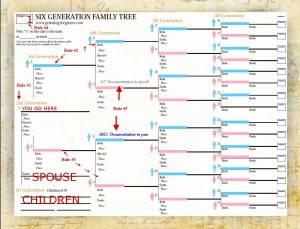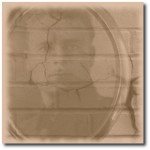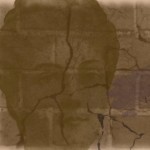Find Your Ancestors in Almanacs
April 1, 2012 by ramona
Filed under Articles, Genealogy Research Resources, Latest News, Sharing Genealogy Information
 Almanacs can be a great resource for genealogists and family historians. Along with weather predictions, advice for farmers and statistical information almanacs can contain tit bits of information about your ancestors that are not found in vital events documents or census. Additionally almanacs can give wonderful ephemeral information to round out your family history story and fill in your family template. Gutenberg printed the very first almanac in 1457 in Mentz, Germany and their use spread to almost every country by the 1600s. By the 1800s, it was possible to find yearly almanacs for nearly every county in Great Britain.
Almanacs can be a great resource for genealogists and family historians. Along with weather predictions, advice for farmers and statistical information almanacs can contain tit bits of information about your ancestors that are not found in vital events documents or census. Additionally almanacs can give wonderful ephemeral information to round out your family history story and fill in your family template. Gutenberg printed the very first almanac in 1457 in Mentz, Germany and their use spread to almost every country by the 1600s. By the 1800s, it was possible to find yearly almanacs for nearly every county in Great Britain.
The best way to demonstrate what a great resource an almanac can be is by looking in one for information. For this purpose “Peace’s Orkney Almanac and County Directory, 1886” gives us a great example of genealogical and family history information that.
The Family History Element
Within the front and back pages of the almanac, there is a wide range of advertisements that present a window into your ancestor’s daily lives.
From these advertising pages, we get a glimpse at the fashions of the times, modes of travel, an idea of how they may have approached emigrating to a new land and even some insight into daily chores.

Almanacs and Genealogy
An almanac contains a wealth of information in the trades sections. From listings of “Inspectors of the Poor” to a list of “Registrars of Births, Marriages and Deaths” that can be very helpful in pinpointing those questionable dates. Looking at this entry, we can see the timelines given to register any vital events.

Almanacs can also be used to help you find resources for records. Peaces Orkney and Shetland Almanac names all of the churches, clergy, schools and teachers in the county. It also gives the names of newspapers that were published at the time along with groups, society’s guilds and clubs, which are all fantastic sources of information for family tree research.
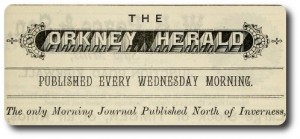
Additionally, it is common for almanacs to break up the directory listings by parish where you may find information that is more specific to your ancestor. Flipping to the directory for Sanday we find out that Peter Sinclair is listed as a member of the Parochial Board as well as a member of the School Board, which suggests he was an active member of his community. Not information found in a census, in fact almanacs are probably the number one place to look if you are searching for clues about your ancestors between census years.
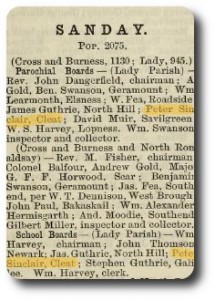
In this particular issue, we get lucky, as there is register of voters that not only lists the men but also gives a list of female municipal electors that predates women being given the right to vote in Great Britain. Looking at an almanac for genealogy can not only help locate ancestors and resources, it can also teach a few things that we may not learn from history books; such as areas where reform was more progressive. The pictures and stories of an almanac are one of those often forgotten information sources that can paint a surprisingly vivid picture of your family tree.
Image Credits: Ramona Hartley, Peaces Orkney Almanac and County Directory
Source: Internet Archives, National Library of Scotland
Rights: National Library of Scotland holds full rights in this digital resource and agrees to license the resource under the Creative Commons License: Attribution-Noncommercial-Share Alike 2.5 UK: Scotland.
Creative Commons license: Attribution-Noncommercial-Share Alike 2.5 UK: Scotland
Licenseurl: http://creativecommons.org/licenses/by-nc-sa/2.5/scotland/
Fill out Your Family Template the Easy Way
March 29, 2012 by ramona
Filed under Articles, Getting Started in Genealogy, Introduction to Genealogy, Latest News
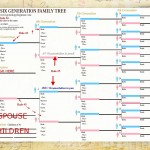 Have you ever felt confused about how to fill out a Family Tree Template?
Have you ever felt confused about how to fill out a Family Tree Template?
- Wondered what the numbers mean?
- Who you should include?
- Where to start?
Here are a few simple rules to follow that will have you filling out your Family Template in no time.
Family Template Rule #1 = YOU
Always start with yourself. Your name goes in the number one spot on the chart along with your vital statistics information such as when and where you were born. A space for the place and date of your marriage should be below that and if you look down many Family Tree Templates include an area to record the name of your spouse and children.
Family Template Rule #2 = MEN
Slightly indented and up from spot number one you should find the numbers two. This is where you will record your fathers name and information.
The rule if thumb:
- The males in your family will always have even numbers (2,4,6,8)
- The males in your family will always follow the upper track on a family template.
Family Template Rule #3 = WOMEN
Slightly indented and below number one you will find the number three spot
The Rule of thumb:
- The maternal lines of your family will always have odd numbers (3,5,7,9)
- The maternal lines of your family will always follow the bottom track on a Family Tree Template
Family Template Rule #4 = Generations
If you follow these rules through every generation, you will never be confused again. However, wait we are not quite finished yet. If you look on the upper left hand corner of your Family Template, you will notice a little box that says, “Chart#”. This area is needed for when you family tree goes beyond the number of generations on the chart.
Rule of Thumb:
- The template that includes you and your immediate family is always number one
- Number your Family Tree Templates consecutively to avoid confusion. For example if you were starting on a seventh generation, you would need to begin another Family Template and that template would be number two.
Note: Just below the “Chart #” box, there is a space that says “Note: “1” on this chart is the same as ____ on chart ____. This section is to help keep you organized when working with multiple Family Tree forms. For example if you were making a desendance report, this gives you a quick reference to where you can be found in the report.
Family Template Rule #5 = Documentation
All good genealogy research endeavors to document findings with copies or originals of birth, marriage and death records.
Rule of Thumb:
- Use a pencil to fill out the names for individuals for which you do not have documentation
- Use a pen to fill out the names for individuals for which you do have documentation
Family Template Rule #6 = Extended Family
Your Family Template is for your direct line of ancestry
Rule of Thumb:
- Uncles, aunts and cousins are not included on your Family Tree Template.
Here is a visual cue to help you get started (Click for a larger view)
Now that you are ready to begin filling in your family’s generations all you need is a Family Tree Template, just follow this link and download your FREE FAMILY TEMPLATE today.
Genealogy & Newspapers: Obituaries
March 25, 2012 by ramona
Filed under Articles, Genealogy Research Resources, Latest News, Sharing Genealogy Information

One single record may tell you more about your ancestor than a death, marriage and birth certificate combined and that is their obituary. Obituaries can provide information about your ancestor that cannot be found in civil and church records and that makes them one of the best sources of genealogical information available. Before death certificates were even required obituaries had already long existed.
The Value of Obituaries to Genealogical Research
Even when you have already obtained all of the official records for your ancestors, an obituary can help fill in the gaps between years. Obituaries frequently impart valuable information about events that happened in the years between birth, marriage, the census returns and death.
For example, an obituary can identify children you may have missed. Often when we look at a timeline of our ancestor’s childbearing year’s we see that births occur in a pattern. Such is the case with my ancestors Peter Sinclair and Catherine Calder.
Children of Peter Sinclair and Catherine Calder m. 1854:
- James Sinclair b. 1855
- Isabella (Bella) Sinclair b.1857
- Catherine Drever Sinclair b. 1859
- Richard Sinclair b.1861
- William Sinclair b.1862
- Jean Sinclair b.1867
- Peter Sinclair b.1870
- Robert Sinclair b.1874
You can see by the example that from their first child to their fifth child there was two years between births. Then the pattern breaks with a five-year gap between the fifth and sixth child, a three-year gap between the sixth and seventh child and a four-year gap between the last two.
Gaps like this indicate the possible loss of a child. If you find gaps such as this that lie between census years and no record of birth or death has been found, an obituary is the logical place to look.
Your Ancestors Obituary
Here is a quick look at some of the other information that can be found in an obituary.
- Dates of birth, marriage and death
- Place of birth, marriage and death
- Name of parents and grandparents
- Number of children and grandchildren
- Names of children and grandchildren
- Residences and Occupations
- Memberships to clubs or societies
- Religion and church attended
- Military Service information
- Cause of death
Where to Find Obituaries for Your Family Tree
When you think of obituaries, the primary resource that comes to mind is newspapers. That is certainly a logical conclusion, the next questions are where to find the newspapers and if you are researching from a distance how to access them.
A great source for this information is online obituary indexes. Obituary indexes such as the Library of congress’s “Chronicling of America” provides searchable, free, online access to a huge database of newspapers from 1836 – 1922. If the newspaper you are looking for were not accessible online your next strategy would be to locate an obituary look-up or mailing list.
Although newspapers are recognizably the main source of obituaries, they are only half the story. Obituaries and obituary indexes can also be found in published journals, such as the “Obituaries Index Prior to 1800 by Sir William Musgrave” an index to the obituaries of “memorable persons” of England, Scotland and Ireland. This publication and others like it hold a treasure trove of ancestral information that may point out obituaries published in books, university papers, magazines and memoirs. All great sources that get you closer to adding another generation to your family template.
If you have any tips to share on researching obituaries or any questions about this wonderful source of ancestral information, join us on the Genealogy in General forum.
Image Credit: Ramona Hartley
“Finding Your Roots” Premiers Sunday
March 21, 2012 by ramona
Filed under Articles, Latest News
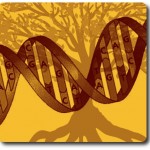
Mark your calendars for Sunday March 25 8pm EDT to watch the premier of “Finding Your Roots” with Henry Louis Gates, Jr.
Perhaps what makes “Finding Your Roots” one of the most interesting celebrity genealogy programs to date is the element of surprise as Gates escorts his guests through some shocking revelations in search of their ancestors.
Each episode features the genealogy of two or more celebrities. With the help of some leading American Genealogists, Family History experts and DNA samples. The show often links guests together in surprising ways using Autosomal DNA.
Scientists Joanna Mountain and Mike Macpherson of “23and Me” (genetics testing company) worked with “Finding Your Roots” to come up with some often-astonishing results. Proving relationships by degrees such as 3rd, 4th, 5th cousins (or more) is accomplished using the genetics company’s “Relative Finder” test.
This seasons 10 part series features a celebrity Line up of:
· Harry Connick Jr. and Branford Marsalis
· Cory Booker and John Lewis
· TV Personalities Barbera Walters and Geoffrey Canada
· Kevin Bacon and Kyra Sedgwick
· Angela Buchdahl, Rick Warren and Yasir Qadhi
· Samuel L. Jackson, Condoleezza Rice and Ruth Simmons
· Actors Maggie Gyllenhaal and Robert Downey, Jr.
· Sanjay Gupta, Margaret Cho and Martha Stewart
· John Legend, Wanda Sykes and Margarett Cooper
· Michelle Rodriguez, Adrian Grenier and Linda Chavez
Watch Preview on PBS. See more from Finding Your Roots.
Free Immigration Records: Ellis Island Site Calls for Help
March 20, 2012 by ramona
Filed under Articles, Latest News
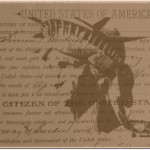
These days genealogy sites that give free access to records are few and far between. One of the few sites that do provide free use is The Ellis Island Immigration site. If you have used the Ellis Island site to find your ancestors immigration records you already know what a valuable resource it is to family tree climbers. Can you imagine what a tragedy it would be to the genealogy community if that access were lost?
This week a story in The Tribune Star by Tamie Dehler, calls out on behalf of the Statue of Liberty/Ellis Island Foundation. The foundation, responsible for making free immigration records available to genealogists and family history researchers is a non-profit organization that relies heavily on public support for continued free access to these important records.
In their message to the public, the foundation says:
“In order to continue to provide free access to our valuable archive of immigration records … we need to ask our friends to step in and play a part with a critically needed contribution. For more than 10 years, these immigration records have been free for you to explore. But our site and content are costly to maintain, operate day-to-day, and continually improve. We’re a non-profit, so your tax-deductible contribution is essential to our work. And in tough times like these, whatever donation you make goes even further than you can imagine in keeping Ellis Island Online free.”
Your support in the form of a yearly membership will help The Statue of Liberty-
Ellis Island Foundation, Inc. keep this invaluable service open to genealogists. Membership costs total $45.00 per year and are 100% tax deductible.
Visit The Statue of Liberty-Ellis Island Foundation, Inc and support the foundation that has helped so many.
Image Credit: Ramona Hartley
Genealogy Brick Walls: Look In the Unlikely Places
March 18, 2012 by ramona
Filed under Articles, Genealogy Searches by Place, Introduction to Genealogy, Latest News
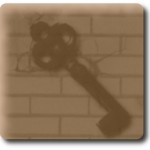 Hitting a brick wall in your family tree is an extremely frustrating experience for every family tree enthusiast from the novice to the advanced. Especially after, you have spent hours combing through all of the obvious records. When you have already checked the church records, civil records, obituaries, newspaper archives, immigration records and census…do not give up. Just realize that it is time to pull out your shovel and start digging deeper.
Hitting a brick wall in your family tree is an extremely frustrating experience for every family tree enthusiast from the novice to the advanced. Especially after, you have spent hours combing through all of the obvious records. When you have already checked the church records, civil records, obituaries, newspaper archives, immigration records and census…do not give up. Just realize that it is time to pull out your shovel and start digging deeper.
In short, after you have looked in all of the likely places the only places left to check are the unlikely ones.
Genealogy in the Unlikely Places
The unlikely places are usually the ones you ruled out your first time through. You may be very surprised at how much information you can find by looking in records that seemed irrelevant or illogical to your family tree research.
Finding Ancestors in Land Records
You have ruled this out because your ancestor did not own land, but did you know you could still find the record of a lease for a tenant farmer or rental agreement for your Great, Great Grandma’s city home.
Your Family Tree and Depositions
You have probably already checked the immigration records to see if your ancestors changed their name upon landing in the new country. However, did you know that many immigrants did not change their names until they were already naturalized citizens? If your ancestor decided to change their name after becoming a naturalized citizen, you would find this information in court records as depositions.
Name changes of this type often happened because immigrants felt a foreign name made their lives more difficult in their new home. If your ancestor has pulled a disappearing act, searching depositions for name changes would be a good place to start.
Historical Societies and Genealogy
Your local historical society (or the local historical society where your ancestor lived) may hold the clues you have been looking for. Historical societies are notorious for holding little known documents and unpublished works that are only listed within their collection.
One Family Tree Search is Never Enough
Newspaper archives may be something you have already checked. Nevertheless, you should try them again. Many genealogy beginners give up far too soon on this information source by stopping at a single search type. Any search of a newspaper archive should be undertaken with three search strategies.
- Search by Name
- Search by Date
- Search by Location
A newspaper can hold so much information in a single issue that not all names are indexed. That is why a three-tier search is necessary.
Although sometimes a brick wall in your genealogy research is due to records being lost in fires and wars, poor preservation and/or the records were simply not kept. The biggest problem with brick walls is that family enthusiasts either give up too soon or just don’t know where to look next. Should you have any questions or want a little extra help tackling your brick wall, please feel welcome to post your questions to the Ask a Genealogist forum. Genealogy Beginner looks forward to hearing from you.
Image Credit: Ramona Hartley
Genealogy Brick Walls: Look In the Unlikely Places
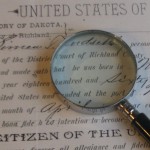 Hitting a brick wall in your family tree is an extremely frustrating experience for every family tree enthusiast from the novice to the advanced. Especially after, you have spent hours combing through all of the obvious records. When you have already checked the church records, civil records, obituaries, newspaper archives, immigration records and census…do not give up. Just realize that it is time to pull out your shovel and start digging deeper.
Hitting a brick wall in your family tree is an extremely frustrating experience for every family tree enthusiast from the novice to the advanced. Especially after, you have spent hours combing through all of the obvious records. When you have already checked the church records, civil records, obituaries, newspaper archives, immigration records and census…do not give up. Just realize that it is time to pull out your shovel and start digging deeper.
In short, after you have looked in all of the likely places the only places left to check are the unlikely ones.
Genealogy in the Unlikely Places
The unlikely places are usually the ones you ruled out your first time through. You may be very surprised at how much information you can find by looking in records that seemed irrelevant or illogical to your family tree research.
Finding Ancestors in Land Records
You have ruled this out because your ancestor did not own land, but did you know you could still find the record of a lease for a tenant farmer or rental agreement for your Great, Great Grandma’s city home.
Your Family Tree and Depositions
You have probably already checked the immigration records to see if your ancestors changed their name upon landing in the new country. However, did you know that many immigrants did not change their names until they were already naturalized citizens? If your ancestor decided to change their name after becoming a naturalized citizen, you would find this information in court records as depositions.
Name changes of this type often happened because immigrants felt a foreign name made their lives more difficult in their new home. If your ancestor has pulled a disappearing act, searching depositions for name changes would be a good place to start.
Historical Societies and Genealogy
Your local historical society (or the local historical society where your ancestor lived) may hold the clues you have been looking for. Historical societies are notorious for holding little known documents and unpublished works that are only listed within their collection.
One Family Tree Search is Never Enough
Newspaper archives may be something you have already checked. Nevertheless, you should try them again. Many genealogy beginners give up far too soon on this information source by stopping at a single search type. Any search of a newspaper archive should be undertaken with three search strategies.
- Search by Name
- Search by Date
- Search by Location
A newspaper can hold so much information in a single issue that not all names are indexed. That is why a three-tier search is necessary.
Although sometimes a brick wall in your genealogy research is due to records being lost in fires and wars, poor preservation and/or the records were simply not kept. The biggest problem with brick walls is that family enthusiasts either give up too soon or just don’t know where to look next. Should you have any questions or want a little extra help tackling your brick wall, please feel welcome to post your questions to the Ask a Genealogist forum. Genealogy Beginner looks forward to hearing from you.
Image Credit: Ramona Hartley
Genealogy Pitfalls: Genealogy Beginners Beware
March 9, 2012 by ramona
Filed under Articles, Getting Started in Genealogy, Introduction to Genealogy, Latest News
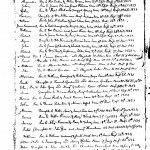 Recently while researching a family line, I discovered what I hoped might be a breakthrough on a frustrating brick wall. What I actually found was a good reason for beginning genealogists to use caution before including individuals in their family tree without first confirming the source. Truth to tell, this is a sad tale of how genealogy misinformation and mistakes are spread.
Recently while researching a family line, I discovered what I hoped might be a breakthrough on a frustrating brick wall. What I actually found was a good reason for beginning genealogists to use caution before including individuals in their family tree without first confirming the source. Truth to tell, this is a sad tale of how genealogy misinformation and mistakes are spread.
This story starts with a search for the parents of John McCallum b. about 1785.
I know that John was born on approximately this date from one source.
Monumental Inscriptions: Carnwath, County of Lanark for John McCallum
Death, noted: By Peter and J. McCallum to Fa. John 16/9/ 1839} 54; John McC. s. of Jas. 27/5/1865} 20; Janet Gibson w. of said John McC. 25/11/1876} 86; Said Jas McC. 27/6/1898} 81; Marion Law 9/4/1904} 83; their gdr nurse janet McC. 30/8/1902} 22.
I know the above named is my John McCallum from three separate sources:
1. From Statutrory Index 1916 – 1876 for the death of Janet McCallum:
Death November 25th, 1876
Fauldhouse, County of Linlithgow
At Rosebank, Fauldhouse, Parish of Whitburn
JANET MCCALLUM, 86, Widow of John McCallum, labourer
daughter of:-
F. Alexander Gibson………..deceased
M. Christine Gibson, m.s. Weir…deceased
Cause: Chronic Brights disease, 10 months
as cert. by John Crawford L.R.C.S.E.
Informant Isaac McCallum, Son, Present.
2. Statutory Index pre 1855 births 1824 & 1823 for the birth of William to John McCallum and Janet Gibson and consulted OPR 632/3 Carnwath, County of Lanark.
Birth: “William son to John McCallum and Janet Gibson born Oct. 4, Baptized 26th 1823.”
3. Statutory Index 1913-1916 for the death of William McCallum, In West Calder
Death: 1916, January 24th
West Calder, County of Midlothian
at 5 Davy street, Addiwell, West Calder
William McCallum, 92, Traffic Manager, Widower of Martha Walker.
Son of :-
F. John McCallum, Laborer…deceased
M. Janet McCallum, m.s. Gibson…deceased
Cause, Senile Decay, 1 month. As cert. by John Young, L.R.C.P.&S.E.
Informant James McCallum, Son.
Anatomy of an Ancestor Hunt
What I want to know is who Johns parents were, unfortunately Carnwath marriages are blank from 1735-1826. Additionally I have been unable to find a death record for John; two documents that could contain the information I need.
While searching for source documents or any clues as to the parentage of my John I ran across several family trees on the internet that named both my John, his wife and their children. A total of three family trees on Ancestry.com and one website, all naming John’s parents as John McCallum and Catherine Gray from Kilmicheal, Glassary, Argyll, Scotland
A Family Tree Cautionary Tale
Following this trail, I checked to see what sources they had cited…I found none listed. Still hopeful, I wrote to every lead and asked if they could help me locate the source they had used. Two Ancestry.com users answered that they had found the information from the other Ancestry.com tree and had not checked on the source. The other did not respond.
The website owner was lovely and sent me a copy of the birth registration from the OPR, here is a transcript.
09/01/1785 McCallum, John [OPR Births 511/000010 0061 Glassary]
“John McCallum Ashdaherlic & Catherine McCallum had a child named John”
Sadly, this is far from conclusive as there are eight other possible parents for my John McCallum b. 1785. (Note: this document does not give the mothers maiden name).
All couples listed below also had a son born 1785 named John McCallum.
- Donald Mccallum, Jean Graham ABERFOYLE,PERTH,SCOTLAND
- John Mccallum, Agnas Mcjock BUCHANAN, STIRLING, SCOTLAND
- Peter Mccallum, Janet Mclaren KENMORE,PERTH,SCOTLAND
- James Mccallum, Mary Forsyth BARONY,LANARK,SCOTLAND
- John Mccallum, Christian Jackson GLASGOW,LANARK,SCOTLAND
- Daniel Mcallum, Ann Mcallum STIRLING, STIRLING, SCOTLAND
- Hugh Mcallum, Katharine Mcfarlane BONHILL,DUNBARTON,SCOTLAND
- Daniel Mcallum, Ann Mcallum STIRLING, STIRLING, SCOTLAND
The Moral of the Story
As you can see from this story, it is very important to find documented sources before including someone in your family tree and publishing the information. It is just as important to remember that genealogy research sites are tools. Ancestry.com states “don’t take un-sourced documents at face value”. Finding your ancestor listed on someone else’s tree is not proof. Without a documentable source or two to back up your research you are simply guessing.
To learn more about avoiding pitfalls, citing sources and the standards of good genealogical research check out, Lesson 1: Beginning Genealogy – The Big Five.
Image Credit: Ramona Hartley
Genealogy Brick Walls: The Problem of Names
March 8, 2012 by ramona
Filed under Articles, Genealogy and Surnames, Introduction to Genealogy, Latest News
Nothing can stop your family tree research in its tracks like not being able to find your ancestors records. Usually, this boils down to the big four problems of names.
- Common names give too many options
- Spelling variations lead to confusion
- Misspellings can frustrate your efforts
- Indexing errors…are a fact of genealogy research
Brick Wall Problems with Common Names
The issue with common names is that they offer too many possibilities. If your ancestor is Joe Smith or Ole Olson your main question is going to be which one is mine? For example, a quick search for Ole Oleson, born 1830 in Rendalen, Norway, returns 632 records. You are going to need to employ some hard-core search strategies to find your Ole Oleson.
Brick Wall Problems with Spelling Variations and Spelling Mistakes
At the time of the early census there was no standardization for the spelling of names, consequently names were often spelled phonetically. Add to this the fact that not everyone had access to education (your ancestor may not have been able to spell or write their name) and it is not hard to imagine why we come up with so many variations on a single surname.
Another common problem of the time was simple human error. Spelling mistakes occurred frequently and for the same reasons as stated above. Additionally, immigrant ancestors may not have had a strong enough grasp of English to catch errors or perhaps the census taker had a difficult time understanding them.
On the other hand, they may have altered their name to a more anglicized version or changed it altogether.
Brick Wall Problems with Indexing Errors
Thank goodness for the volunteers who spend hours transcribing documents, these wonderful people are the ones responsible for making records readily available to family tree enthusiasts. I would never fault them for their efforts. If you have ever spent time as a volunteer indexer you would agree, old writing is sometimes so faded or illegible that mistakes are unavoidable.
In spite of the problem of names, brick walls can be annihilated. Here are a few approaches you can use to overcome them.
Brick Wall Genealogy General Rules of Thumb:
- Use Wild Card and Boolean searches
- Make a list of all possible spellings of your ancestor’s surname
- Find an ancestor with an uncommon first name and search with that to find your family
- Combine your search to include a spouse’s name
Common names, surname variants, misspellings and indexing errors while problematic are not insurmountable. Using some of the above brick wall tips combined with a sound research strategy read (Brick Wall Breakthroughs for Genealogy Beginners) will give you the tools to break down your brick wall and move forward with your research. Join us in the forum Ask a Genealogist where you will find four key strategies to solving your brick wall problem with names.
Image Credit: Ramona Hartley
Brick Wall Breakthroughs for Genealogy Beginners
March 4, 2012 by ramona
Filed under Articles, Genealogy Reports and Charts, Introduction to Genealogy, Latest News, Lesson 3 Articles
Brick wall busting is all about problem solving and detective work. However before you can begin to break down your brick wall you need to define exactly what the problem is.
The top four most common causes of brick walls:
Your brick wall may even stem from a combination of the above and that can feel like an overwhelming challenge to the genealogy beginner. What you need are the tools and strategies to keep you from being overwhelmed and that is the first step towards solving your brick wall problem.
Developing Your Brick Wall Search Strategy
A good search strategy for brick walls comes down to initiating three core actions:
Review Genealogy Your Data
Even if you have looked over your data a hundred times…do it again. The reason for implementing this strategy is to find the holes or weak points in your brick wall. For example, large time gaps between children are a big red flag; they indicate an area you need to look into more intensely. Locating the areas where you have gaps in your information will give you leads.
Chart Your Genealogy Research
After you have reviewed your information, chart it. Charting your research will give you an overview that can help you analyze information and spot gaps. A records checklist is one of the best charting strategies, although there are several you can work from to help achieve your goals.
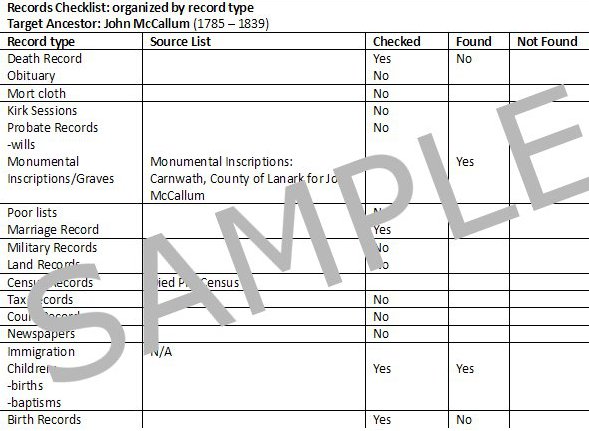
Map Your Locations
In addition to charting your research, another helpful search strategy is mapping. You may find that mapping your family tree will help you understand a little more about your ancestor’s lives as well as assist you in breaking down a brick wall.
Old Maps and Genealogy
Locating and using old maps can be a valuable resource for making a brick wall breakthrough.
- Understanding where county boundaries existed
- Noting border changes
- Discovering old place names that no longer exist
- Understanding the topography (through this you may learn how your ancestors traveled).
All of these things will point you in new directions and help you to discover record sources you may not otherwise consider. Additionally, knowing the lay of the land back then can lead you to the governing body that holds the records today.
Plotting Your Genealogy Research Map
Knowing your ancestors residences, where their children were born, where their spouse was born and where their relatives lived can help fill in gaps. The best way to develop a strong concept of this is to plot a map listing all of these locations.
Lanarkshire Map 1796
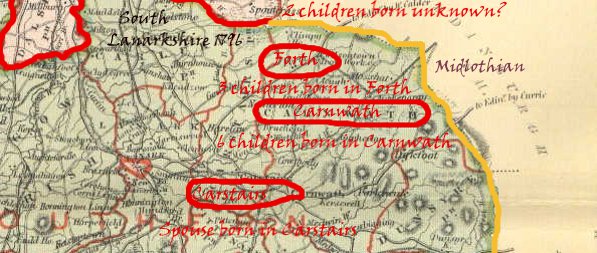
When you have finished plotting your historic map, plot a modern one, and then compare them for missing parishes or towns as well as county border changes.
Modern Lanarkshire Map
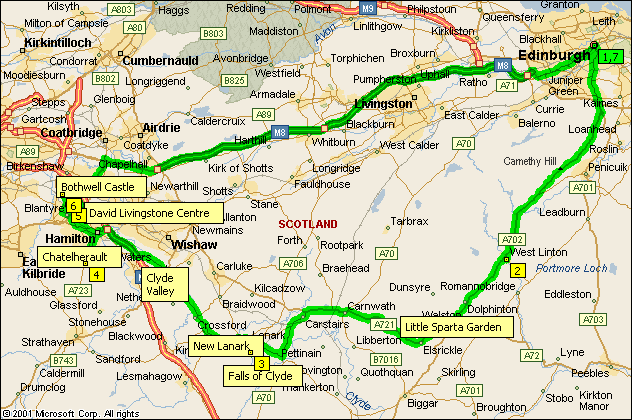
Once you have all of your information charted and mapped out, you will be prepared to make a full and comprehensive search that should help you break your brick wall.
Charting and mapping are only a few of the strategies you can use to help solve your brick wall problems. Genealogy Beginner will be bringing you more invaluable brick wall strategies very soon. For now, join us in the Ask a Genealogist forum and find more tips on charting your research.
Image Credit: Ramona Hartley

